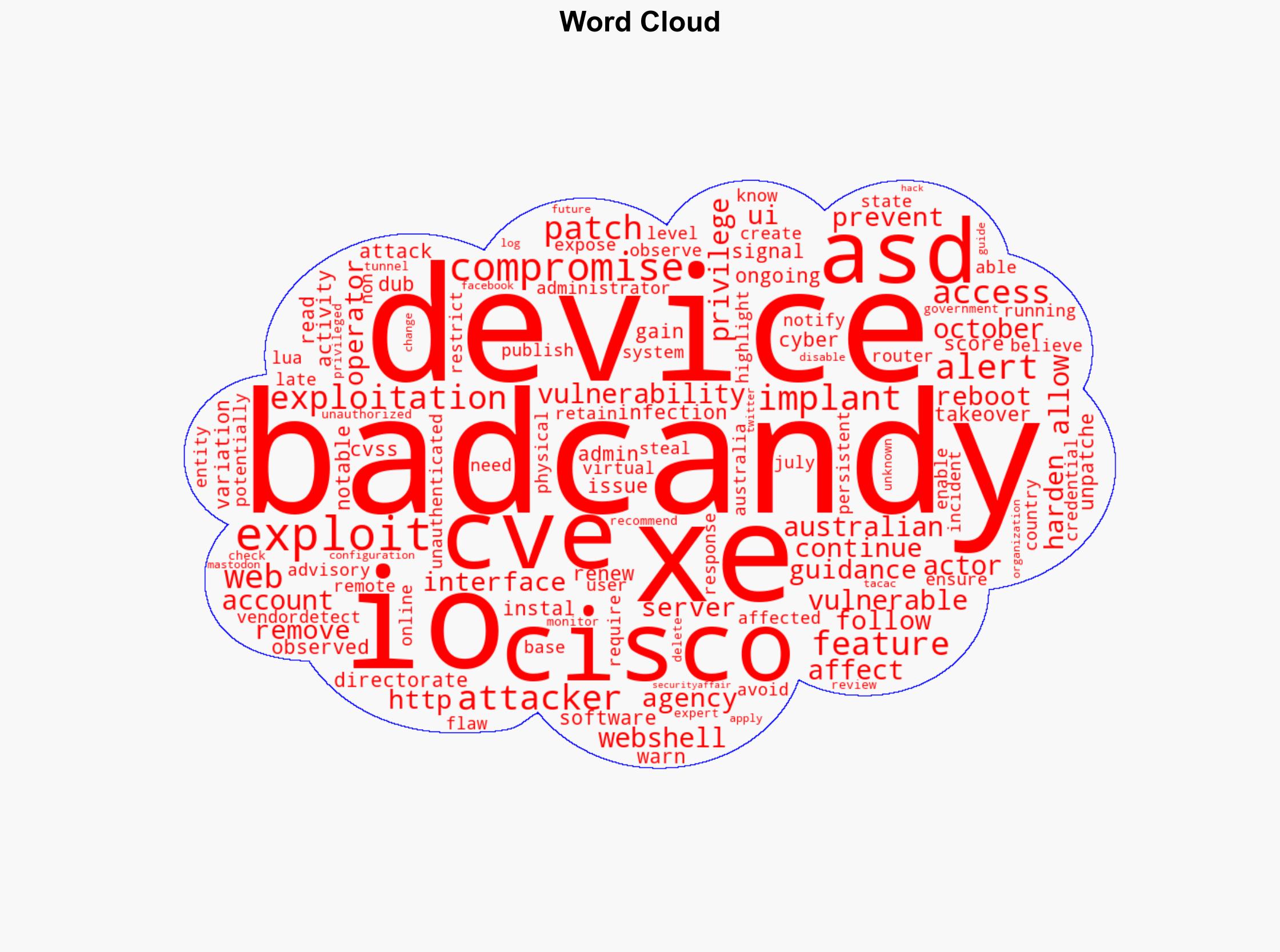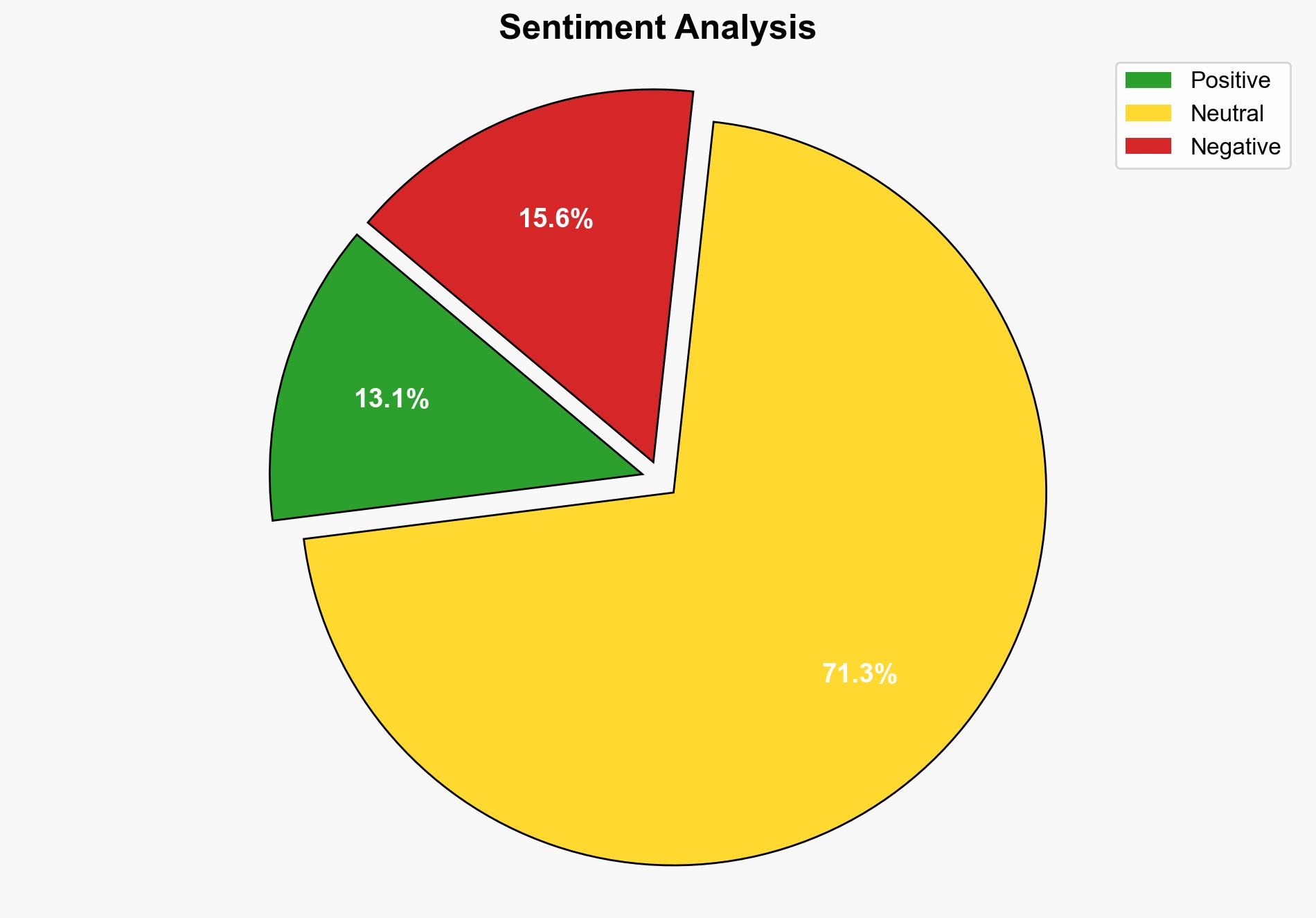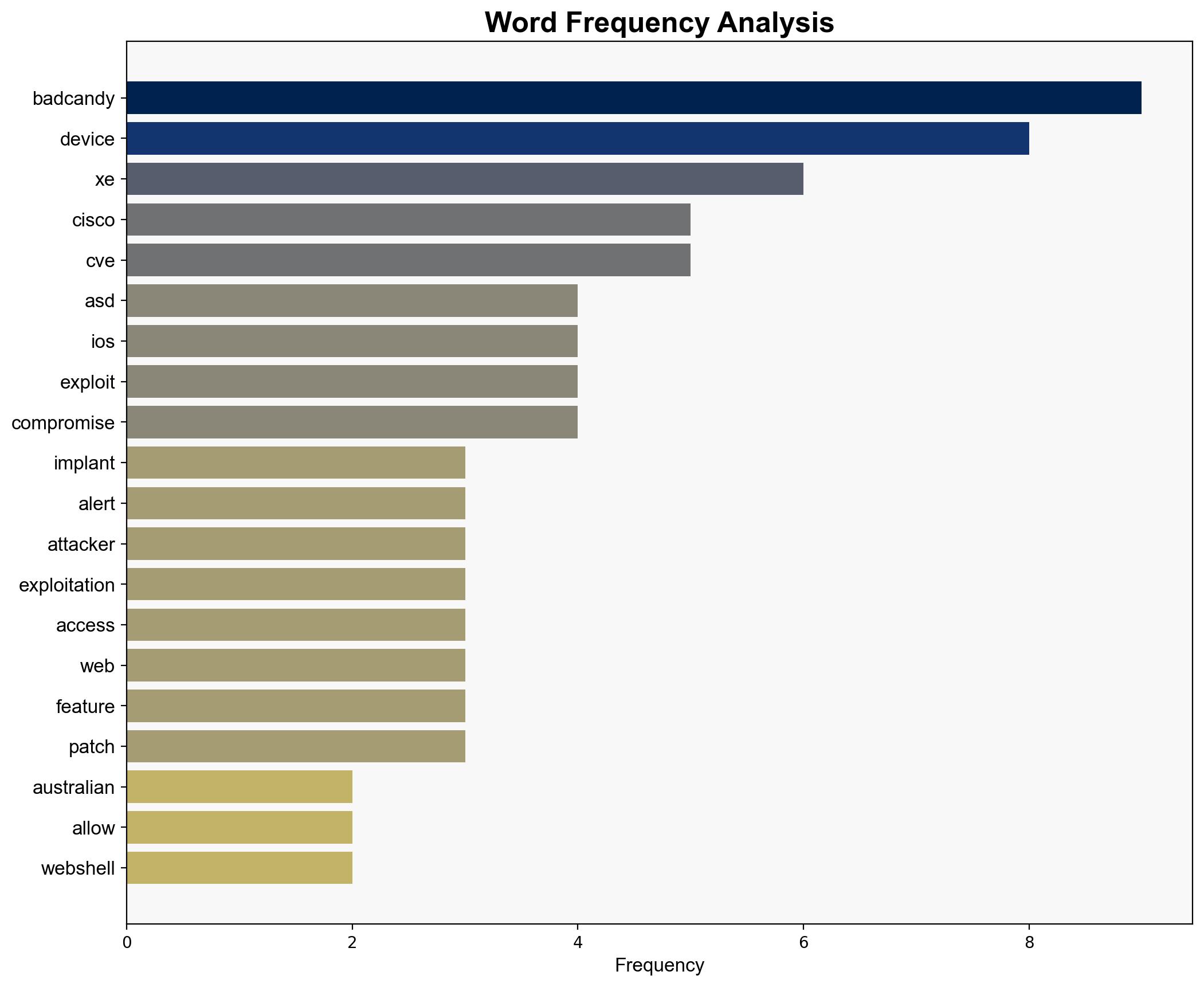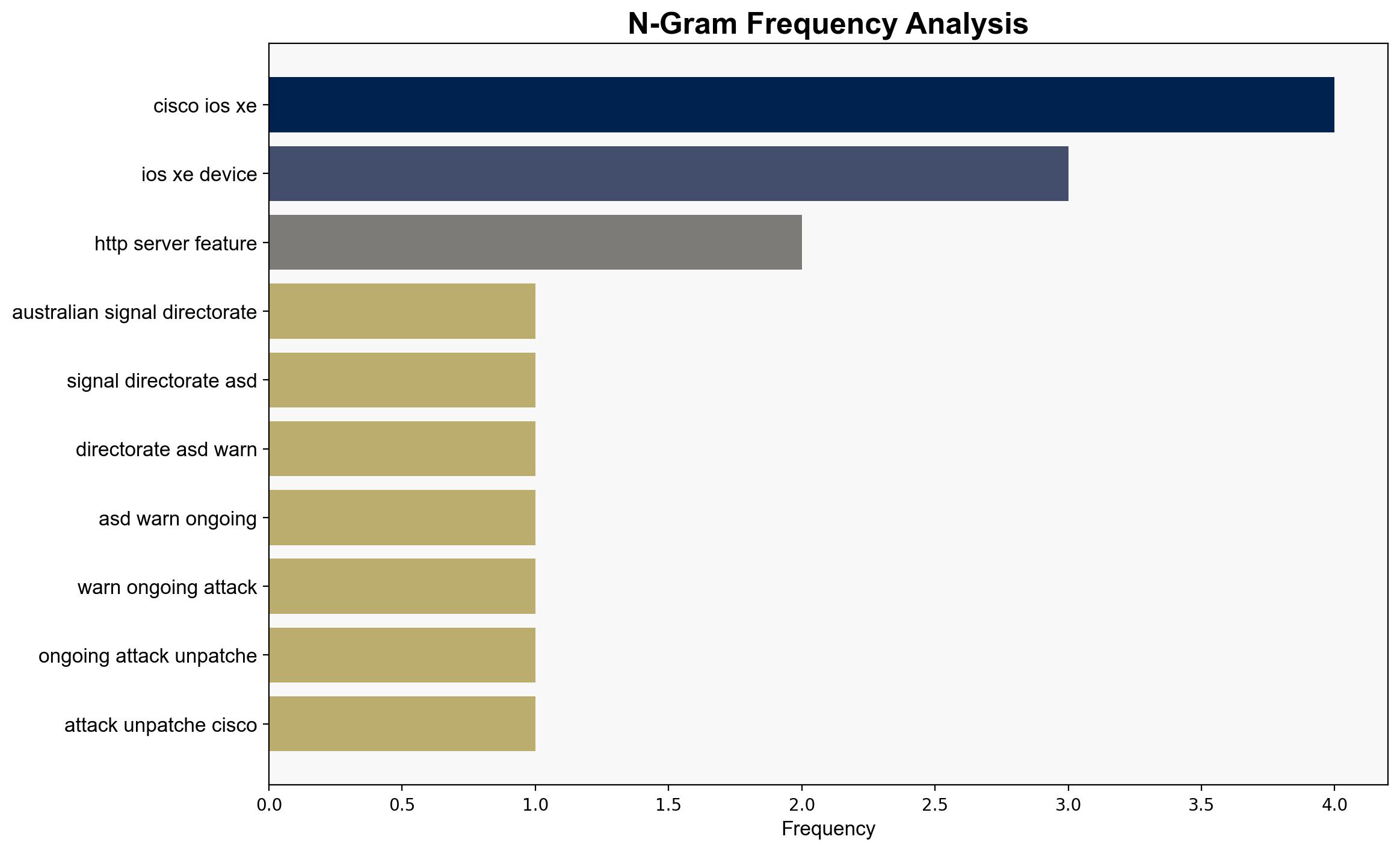BadCandy Webshell threatens unpatched Cisco IOS XE devices warns Australian government – Securityaffairs.com
Published on: 2025-11-01
Intelligence Report: BadCandy Webshell threatens unpatched Cisco IOS XE devices warns Australian government – Securityaffairs.com
1. BLUF (Bottom Line Up Front)
The Australian government has identified a significant cybersecurity threat from the BadCandy webshell targeting unpatched Cisco IOS XE devices. The most supported hypothesis is that a sophisticated cyber actor is exploiting known vulnerabilities to gain unauthorized access and control over these devices. Confidence level: High. Recommended action: Immediate patching of vulnerable systems and enhanced monitoring for signs of compromise.
2. Competing Hypotheses
Hypothesis 1: A state-sponsored actor is systematically exploiting the CVE vulnerability in Cisco IOS XE devices to establish persistent access for intelligence gathering or disruption purposes. This is supported by the sophistication of the attack and the strategic interest in targeting network infrastructure.
Hypothesis 2: An independent cybercriminal group is exploiting the same vulnerability for financial gain, such as selling access to compromised systems or using them for launching further attacks. This is supported by the potential for monetization through unauthorized access and control.
3. Key Assumptions and Red Flags
Assumptions include the belief that the actor’s primary motivation aligns with the observed activity (espionage or financial gain). A red flag is the lack of detailed attribution to a specific actor or group, which introduces uncertainty about the true nature of the threat. Additionally, the reliance on vendor advisories and government alerts may overlook undisclosed vulnerabilities or exploits.
4. Implications and Strategic Risks
The exploitation of Cisco IOS XE devices poses a cascading threat to national and organizational cybersecurity, potentially leading to data breaches, network disruptions, and loss of sensitive information. The geopolitical dimension includes potential escalation if state-sponsored involvement is confirmed. Economically, organizations may face increased costs for mitigation and response.
5. Recommendations and Outlook
- Immediate action: Patch all vulnerable Cisco IOS XE devices and disable the HTTP server feature as per Cisco’s hardening guide.
- Short-term: Enhance monitoring for unauthorized access and configuration changes, and conduct regular security audits.
- Long-term: Develop a comprehensive incident response plan and invest in cybersecurity training for personnel.
- Scenario-based projections:
- Best case: Successful patching and monitoring prevent further exploitation, reducing the threat level.
- Worst case: Continued exploitation leads to significant data breaches and operational disruptions.
- Most likely: Ongoing efforts mitigate immediate risks, but the threat persists due to new vulnerabilities.
6. Key Individuals and Entities
No specific individuals are mentioned in the source text. The focus is on entities such as the Australian Signals Directorate and Cisco.
7. Thematic Tags
national security threats, cybersecurity, counter-terrorism, regional focus





